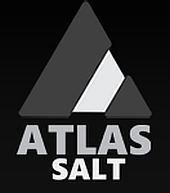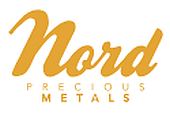 West High Yield Resources planning magnesium mine
West High Yield Resources planning magnesium mine
Junior exploration company, West High Yield Resources Ltd. [WHY-TSXV], is aiming to take its Record Ridge magnesium project into production. Discovered in 2007, the project is 7.5 km west-southwest of Rossland, southern British Columbia.
Frank Marasco, President and CEO, said, “We are in a pro-mining town, with full infrastructure in place. It will be an open pit [operation] and we are very happy with this discovery.”
WHY retains 100% of the mineral rights at Record Ridge, and are in the process of obtaining permits to surface rights. The serpentine-hosted magnesium deposit has been traced down to an average depth of 135 metres below surface and is open in all directions and at depth.
Marasco commented, “This thing is 7.5 km2 and it’s a one rock unit that starts right at surface…This is just the tip.”
WHY established an NI 43-101 compliant resource in 2013 based on ~10,000 metres of drilling between 2007 and 2011 and, in 2015, obtained permits for extraction of a 10,000-tonne bulk sample.
Combined measured and indicated resources are ~43Mt averaging 24.6% Mg and, using a 21.9% cut-off grade, total magnesium oxide of 10.6 Mt.
The mine plan uses conventional open pit methods with production of approximately 1M tpy for a 42-year mine life. According to Marasco, “We are looking at two years from now to complete permitting. We are going to start off small – probably 2,900 tpd. In the big picture that is a very tiny operation, and a very nice setup.”
Magnesium’s primary use is as an alloy with aluminum. Due to its relative light weight (33% lighter than aluminum), a reduction in emissions may be indirectly attributed to its use as an alloy in the transport industry.
At Record Ridge, mineralization is related to elevated magnesium content in serpentinized ultramafic rocks. Alternate magnesium sources include extraction of magnesium from magnesite, dolomite, carnelite, and brines. “Out of the five types, the lowest CO2 emissions producer is magnesium serpentine (because) the host mineral is a silicate, not a carbonate,” said Marasco. “This makes us part of the new industrial green revolution and we should be proud of producing the product that will be making the world a better place by reducing CO2 emissions.”
Thus far, WHY has received a letter of intent regarding future purchase of up to 100,000 tonnes annually of magnesium ingots for use in manufacturing of rail hopper cars. They are currently pursuing financing ($2 million) for extraction and processing of 10,000-tonne bulk samples.
Next steps for WHY include obtaining a mining permit and completing environmental assessment, environmental baseline and feasibility studies for which they are seeking $3 million. They have engaged SRK consulting, Greenwood Environmental and Drinkard Metalox to start on their next phase.
The outlook for WHY, according to Marasco, is positive, “It’s been 13 years of no cash flow. In the last three years we went through a lot trying to [find] sources of funding. And not just us, the whole [mining] world – but we are starting to see a bit of action again in the mining industry, which is promising.”
http://www.whyresources.com/news/
































